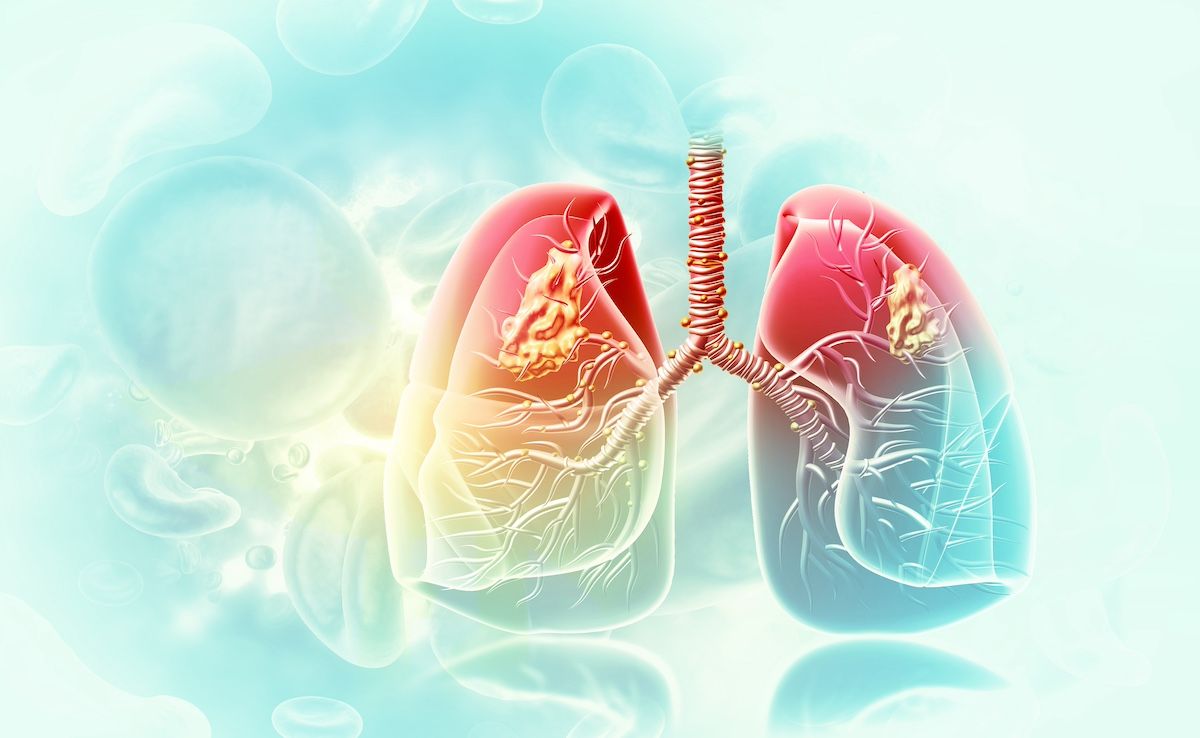Article
Financial Burden an Unintended Outcome of Cancer Care
Author(s):
K. Robin Yabroff, PhD, strategic director, Surveillance and Health Services Research Program, American Cancer Society, would like to see more longitudinal studies that can develop more informed policies to alleviate patient financial hardship. Yabroff was speaking at the Cost-Sharing Roundtable co-hosted by the Patient Access Network Foundation and The American Journal of Managed Care®.
Financial hardship, a common phenomenon among working-age patients, can have different aspects: material, psychological, or behavioral, according to K. Robin Yabroff, PhD, strategic director, Surveillance and Health Services Research Program, American Cancer Society. Yabroff was presenting at the Cost-Sharing Roundtable co-hosted by the Patient Access Network (PAN) Foundation and The American Journal of Managed Care® on February 23, 2018, at the Barbara Jordan Conference Center in Washington, DC.
Yabaroff told the audience that results from their yet unpublished studies among patients with cancer history identified compelling evidence of financial stress, “with patients telling us about credit card debt accrued as a result of time away from work” as well as losing their home and filing for bankruptcy—all consequences of patients' savings being wiped out following severe illness. Meeting the costs associated with their chronic disease condition was a considerable stressor for patients, over and above the stress associated with their diagnosis and associated treatment. Some patients also indicated that they had compromised their career by staying locked in a job that offered good insurance coverage.
According to a 2012 update, nearly 50% of US adults were living with at least 1 chronic condition and about 25% had at least 2 chronic conditions.1 The growing healthcare expenditures can increase out-of-pocket (OOP) spending, and growing OOP costs can indirectly affect outcomes if patients delay seeking care or, worse, forego their care, Yabroff noted.
Financial hardship among patients in the United States is affected by several different factors, including:
- Prevelance of high-deductible health plans (HDHPs)
- Growing patient cost sharing through higher deductibles, co-pays, and coinsurance
- Changing treatment patterns
- Rising cost of treatment
- A growth in the number of uninsured individuals.
Studies have indicated that a significantly higher number of individuals signed up for an HDHP in 2017, Yabroff said. HDHPs have a higher deductible than a traditional health plan and can be combined with a health savings account, which allows payment of medical expenses with tax-free money. According to the National Health Interview Survey, HDHP enrollment increased by nearly 4 percentage points in the first 9 months of 2017 (43.2%, up from 39.4% in 2016).2
Results gathered from the 2015-2016 National Health Interview Survey found that a significant proportion (45.2%) of individuals between ages 18 and 64 years who were worried about paying their medical bills were uninsured; nearly 19% had public insurance and about 10% had private insurance. The population aged 65 years and older saw a much smaller stress of medical bills, however: 8.9% of those with Medicare only, 6.9% with Medicare and public insurance, and 3.2% with Medicare and private insurance faced financial hardship with their treatment.
Bringing cancer care back into perspective in her presentation, Yabroff asked, “What’s happening with the monthly price of cancer drugs?” She then shared data from a 2009 paper by Peter Bach, MD, which showed a steady increase in the monthly price of cancer drugs—in the hundreds in the 1960s and 1970s and averaging between $5000 and $10,000 by 2010.3 Taking note of the new modes of immunotherapy treatments, including the chimeric antigen receptor (CAR) T treatments, Yabroff said that the price tag of $450,000 would completely skew these calculations.
And the consequence of the growing cost burdens? Bankruptcy. A research study from the Fred Hutchison Cancer Center at Washington University noted that patients with cancer had a bankruptcy risk 2.65 times higher than that of those without cancer in Washington State.4 Medicare might afford protection to older patients, because younger patients had a 2- to 5-fold higher rate of bankruptcy than those 65 years and older. Furthermore, the group showed that the stress of financial insolvency was a significant risk factor for mortality in this patient population.5
Using these data as their foundation, Yabroff and her colleagues have developed a financial hardship framework where they created a Venn diagram that intersects material conditions (medical debt, trouble repaying bills, high OOP costs, etc), psychological response (distress and worry), and coping behaviors (delaying or foregoing care due to cost).6 Results from the Medical Expenditure Panel Survey found that younger patients (aged 18-64 years) reported being more susceptible to psychological and material financial hardship (40%) compared with the over-65 population (22%), according to Yabroff. When the authors drilled down further into these data, using the 2012 LIVESTRONG Experiences with Cancer survey,7 they found that 76% of survivors aged 18 to 64 reported material hardship (borrowed money, filed for bankruptcy, etc) and nearly 64% reported psychological hardship.
“Importantly, there is potential for widening disparities in health and health outcomes,” Yabroff said, drawing attention to a study that found the behavioral impact of financial hardships on patients with cancer: a higher rate of delayed prescription filling, less medication intake, or skipping medication doses, compared with patients without a cancer history.
Not surprisingly, race, economic and employment status, and insurance had a significant bearing on the risk of a patient facing financial hardship, Yabroff noted.
So where lies the solution? There is, of course, no single factor that can help resolve the financial stress patients face consequent to treatment—it would require a combined effort from multiple stakeholders beyond the patient and their immediate family and caregivers. Hinting at a need for more research efforts within the organization or practice setting, Yabroff noted that we need policy changes at the state and federal level to help support the needs of these patients, including:
- Financial navigators for patients and their families to reach out to
- Open conversations around cost and benefits of treatment with providers and care teams
- Implementing value-based insurance design to help eliminate low-value care
- Medicaid expansion, which she said would especially benefit patients on expensive specialty medications who just breeze through the Medicare Part D donut hole.
“There is need for more longitudinal data,” Yabroff said, to better understand the initiation of patient financial hardship and how long patients endure it. It is important, she said, “to develop appropriate measures, collect primary data, and conduct national surveys, so we can develop strategies, inform policy, and improve health outcomes for patients and families.”
References
- Multiple chronic conditions among US adults: a 2012 update. Ward BW, Schiller JS, Goodman RA. Prev Chronic Dis. 2014;11:E62. doi: 10.5888/pcd11.130389.
- Martinez ME, Zammitti EP, Cohen RA. Health insurance coverage: early release of estimates from the National Health Interview Survey, January—September 2017. CDC website. cdc.gov/nchs/data/nhis/earlyrelease/insur201802.pdf. Published February 2018. Accessed February 26, 2018.
- Bach P. Limits on Medicare’s ability to control rising spending on cancer drugs. N Engl J Med. 2009; 360(6):626-633. doi: 10.1056/NEJMhpr0807774.
- Ramsey S, Blough D, Kirchhoff A, et al. Washington State cancer patients found to be at greater risk for bankruptcy than people without a cancer diagnosis. Health Aff (Millwood). 2013;32(6):1143-1152. doi: 10.1377/hlthaff.2012.1263.
- Ramsey SD, Bansal A, Fedorenko CR, et al. Financial insolvency as a risk factor for early mortality among patients with cancer. J Clin Oncol. 2016;34(9):980-986. doi: 10.1200/JCO.2015.64.6620.
- Altice CK, Banegas MP, Tucker-Seeley RD, Yabroff KR. Financial hardships experienced by cancer survivors: a systematic review. J Natl Cancer Inst. 2016;109(2). pii: djw205.
- 2012 LIVESTRONG survey: survivors experience with financial concerns. LIVESTRONG website. livestrong.org/what-we-do/reports/survey/fertility. Published 2012. Accessed February 27, 2018.
Newsletter
Stay ahead of policy, cost, and value—subscribe to AJMC for expert insights at the intersection of clinical care and health economics.

PROs Affirm Zongertinib’s Combination of Strong Response Rates With Low Toxicity




